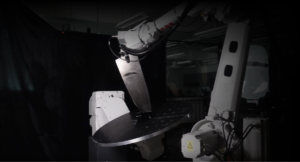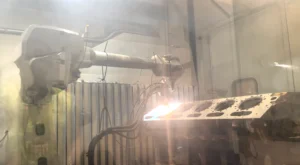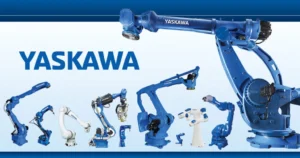table of contents
- Heading 1
- Heading 1
- Heading 1
- AAutomation Manufacturing
- BBlasting
- CCAD (Computer-Aided Design)
- DDigital Twin
- EEnd Effector
- FForce Control
- GGantry System
- HHMLV (High-Mix, Low Volume)
- IIndustrial Robots
- JJogging
- KKinematics
- LLaser Profiling/ Laser Scanning
- MMotion Planning (or Path Planning)
- NNo-code Programming
- OOffline Programming
- PPart Deviation
- QQuality Control
- RReachability
- SSeam Tracking
- TTeach Pendant
- UUptime
- VVision System for Robotics
- WWaypoint
- XX-Axis
- YYaw (And Pitch, and Roll)
- ZZero Downtime
- Conclusion
share this
The fields of manufacturing, robotics, and automation are incredibly dynamic, and rapid advancements are occurring every day. These industries are rich with specialized terminology, and understanding these key terms is essential for professionals looking to navigate and excel in these sectors. Here’s a comprehensive A to Z guide to some of the most widely used terms in these dynamic fields.
A
Automation Manufacturing
Automation in manufacturing involves the use of advanced technologies, such as robotics, artificial intelligence, and machine learning, to operate and control production processes with minimal human intervention. This approach enhances efficiency, precision, and consistency in manufacturing tasks, leading to higher productivity, reduced errors, and lower operational costs. By automating repetitive and complex processes, manufacturers can focus on innovation and quality improvement, ultimately boosting competitiveness in the market. Robotics software is crucial in these automated systems.
B
Blasting
In the manufacturing, robotics, and automation world, robotic blasting refers to a surface treatment process that uses high-pressure streams of abrasive materials, such as sand, steel grit, or glass beads, to clean, smooth, or shape a surface. This process is essential for preparing surfaces for further treatments like painting or coating, removing contaminants, or achieving desired textures. Robotic blasting systems automate this process, ensuring consistent quality, improving efficiency, and enhancing safety by reducing human exposure to potentially hazardous environments. Automated sandblasting and robotic abrasive blasting systems can be programmed to handle complex geometries and high-mix production environments, making them valuable in various industrial applications.
C
CAD (Computer-Aided Design)
CAD software is used to create precision drawings or technical illustrations across various engineering fields. This software is crucial for achieving design accuracy and efficiency in the development process. Additionally, CAD is often integrated with offline robotic programming to simulate and optimize robotic movements and operations, ensuring that designs can be effectively translated into automated manufacturing processes without disrupting production.
D
Digital Twin
A digital twin is a virtual model of a process, product, or service. This is commonly found in robot vision systems and offline robotic programming where the digital twin can simulate and optimize robot paths, detect potential collisions, and refine processes without disrupting actual production, thus improving overall productivity and accuracy.
E
End Effector
The end effector is the part of a robot that interacts with the environment, such as a gripper, tool, or sensor. It is tailored for specific tasks like robotic welding, assembly, or inspection, making it an essential component of robotic systems.
F
Force Control
Force control in robotics refers to the ability of a robot to precisely regulate the amount of force it applies when interacting with objects or its environment. This is achieved through sensors and algorithms that continuously monitor and adjust the force exerted by the robot’s actuators. Force control is essential for tasks requiring delicate handling, precise assembly, or interaction with variable surfaces, ensuring that the robot can adapt to different levels of resistance and avoid damaging parts or materials. This capability enhances the robot’s versatility and effectiveness in complex and sensitive applications, especially when combined with offline robotic programming, which allows for the fine-tuning of force parameters before deployment in real-world scenarios.
G
Gantry System
A gantry system comprises a rigid framework with tracks or rails that support and guide robotic components, allowing them to move along multiple axes (X, Y, and Z). This setup enables precise and expansive coverage, making gantry systems ideal for tasks such as large-scale material handling, assembly, robotic welding, and inspection. Their ability to move tools and sensors accurately over large workspaces enhances efficiency and versatility, making them essential for applications requiring high precision and repeatability in diverse industrial processes.
H
HMLV (High-Mix, Low Volume)
HMLV manufacturing focuses on efficiently producing diverse products in small quantities. This approach caters to customer demand for customization and flexibility, making it highly relevant in today’s market. Incorporating a robot vision system into HMLV manufacturing enhances precision and adaptability, enabling automated systems to handle a variety of products with minimal reconfiguration and ensuring high quality and efficiency in customized production.
I
Industrial Robots
Industrial robots are designed for manufacturing applications, capable of performing tasks with high precision and speed. They are commonly used for assembly, painting, welding, and other tasks that require consistent accuracy and reliability.
J
Jogging
Jogging refers to the manual control of robotic movement for positioning, testing, or teaching. This process is essential for the setup, calibration, and troubleshooting of robotic applications.
K
Kinematics
Kinematic is the study of motion and geometry in robotic systems. It involves analyzing movement and the relationships between components to ensure efficient operation and control.
L
Laser Profiling/ Laser Scanning
Laser profiling or scanning utilizes laser technology to capture precise measurements and contours of objects or surfaces. This technique is critical for quality control, reverse engineering, and detailed inspections.
M
Motion Planning (or Path Planning)
Motion planning determines feasible paths for robots to navigate from start to goal positions, avoiding obstacles and optimizing efficiency. This process is fundamental in automation for ensuring smooth and effective robotic operations.
N
No-code Programming
No-code programming simplifies robot programming with graphical interfaces or templates. This approach enables operators to configure tasks without traditional coding expertise, democratizing the use of robotics and automation.
O
Offline Programming
Offline programming involves creating robot programs on a computer without occupying the actual robot equipment. This method increases productivity and reduces downtime by allowing program development and testing to occur simultaneously with production.
P
Part Deviation
Part deviation is the discrepancy between manufactured parts and design specifications. Part deviation can result from a range of factors, including mounting error, manufacturing tolerances, material variations, warpage, and human error. Managing and minimizing part deviation is critical for quality control and process optimization in manufacturing.
Q
Quality Control
Quality control ensures that products meet established standards through inspection, testing, and analysis. This process safeguards against defects and ensures customer satisfaction, maintaining high standards in manufacturing.
R
Reachability
Reachability refers to the range of motion for robots to access positions or objects within their workspace. It influences system design and task feasibility, particularly in robotic welding machines and automation setups.
S
Seam Tracking
Seam tracking guides welding or cutting systems to follow seams or joints accurately. This technology ensures consistent and precise operations in metal fabrication, enhancing the efficiency of welding robots and other automated systems.
T
Teach Pendant
A teach pendant is a handheld device used for the manual control, programming, and teaching of industrial robots. It facilitates the setup, operation, and maintenance of robotic systems, making it an indispensable tool in robotic welding and automation.
U
Uptime
The period during which a machine or system is operational and available for use, critical for evaluating the efficiency of manufacturing processes.
V
Vision System for Robotics
Robot vision system utilizes cameras, sensors, and image processing to provide visual feedback and guidance. This system enhances the perception and decision-making capabilities of robots, allowing for more sophisticated and adaptive automation.
W
Waypoint
A waypoint is a predetermined location in a robot’s path, defining navigation or task execution points. Waypoints are crucial for efficient and accurate automation, ensuring that robots perform tasks in a precise and controlled manner.
X
X-Axis
In robotic terms, the X-axis typically refers to the horizontal movement axis, fundamental in defining the robot’s movement and positioning capabilities, essential for tasks requiring precise control and accuracy. Similarly, the Y-axis represents the vertical movement axis, allowing for up-and-down motion that complements horizontal movements. The Z-axis denotes the depth or front-to-back movement, enabling the robot to position itself and perform tasks in three-dimensional space. Together, these three axes provide comprehensive control over the robot’s spatial orientation and movement, crucial for executing complex and precise operations in various industrial and manufacturing applications.
Y
Yaw (And Pitch, and Roll)
Yaw, pitch, and roll refer to rotations around the vertical, lateral, and longitudinal axes respectively. These terms describe the orientation or movement in robotics and aerospace, critical for understanding and controlling 3D motion.
Z
Zero Downtime
Zero downtime is an operational goal in automation aiming to achieve no unplanned stops or breakdowns. Maximizing productivity and efficiency, this concept is vital for maintaining continuous and reliable operations in manufacturing and robotics. Robot simulation software helps achieve the operational goal of zero downtime by allowing manufacturers to design, test, and optimize robotic processes in a virtual environment before implementation. This software can identify potential issues, collisions, and inefficiencies in the production process, enabling engineers to make necessary adjustments without interrupting actual operations.
Conclusion
Understanding the specialized terminology in manufacturing, robotics, and automation is crucial for professionals navigating these industries. This A to Z guide provides a comprehensive overview of key terms, offering a valuable resource for anyone looking to deepen their knowledge and expertise in these dynamic fields. Whether you’re involved in welding automation, robotic welding, or any other aspect of these industries, mastering these terms will enhance your ability to communicate effectively.



